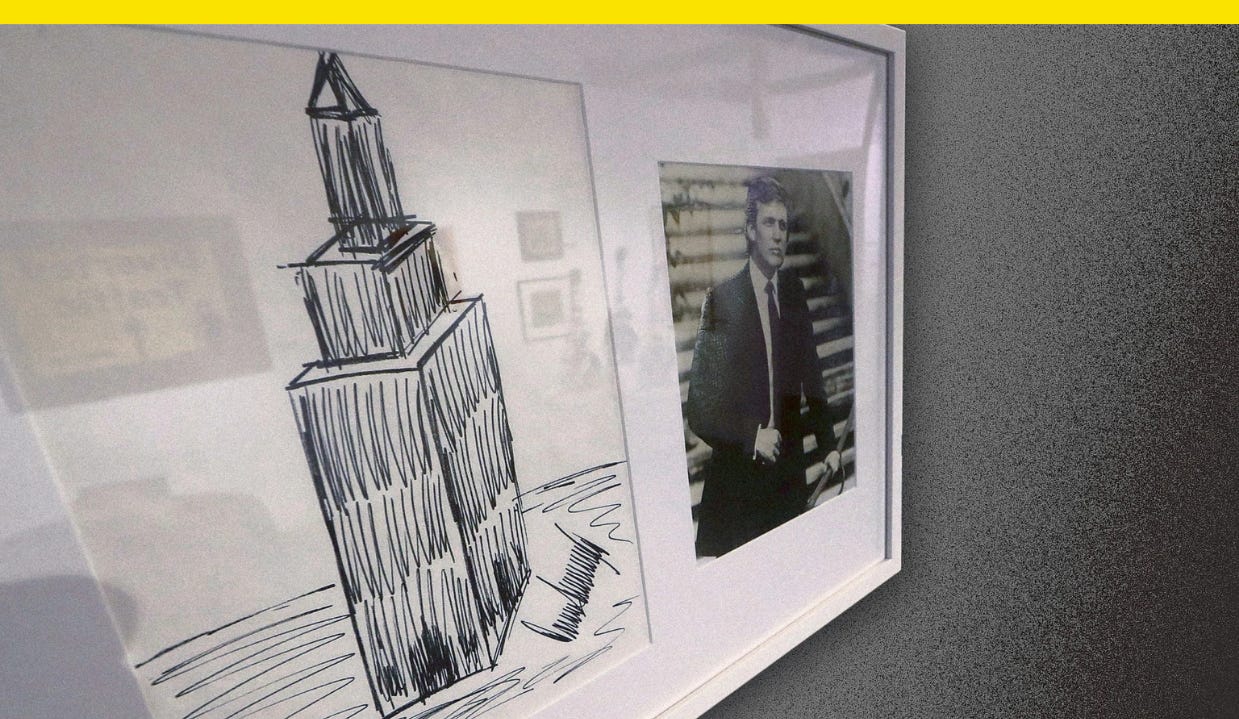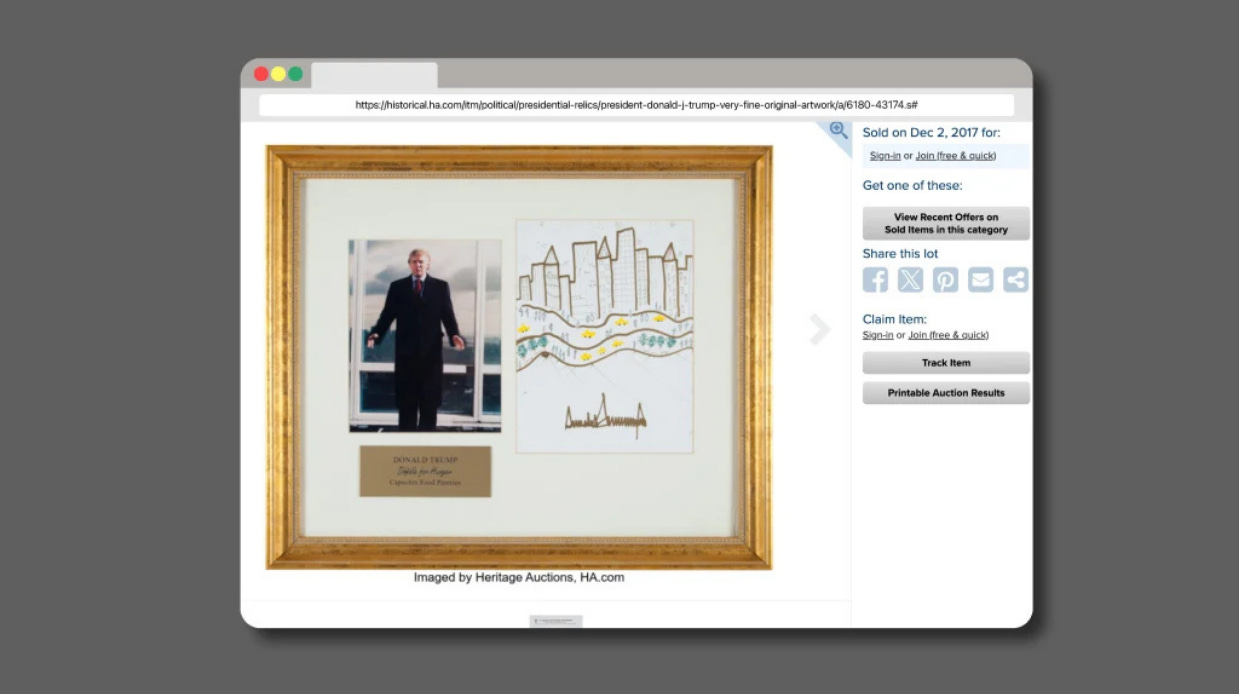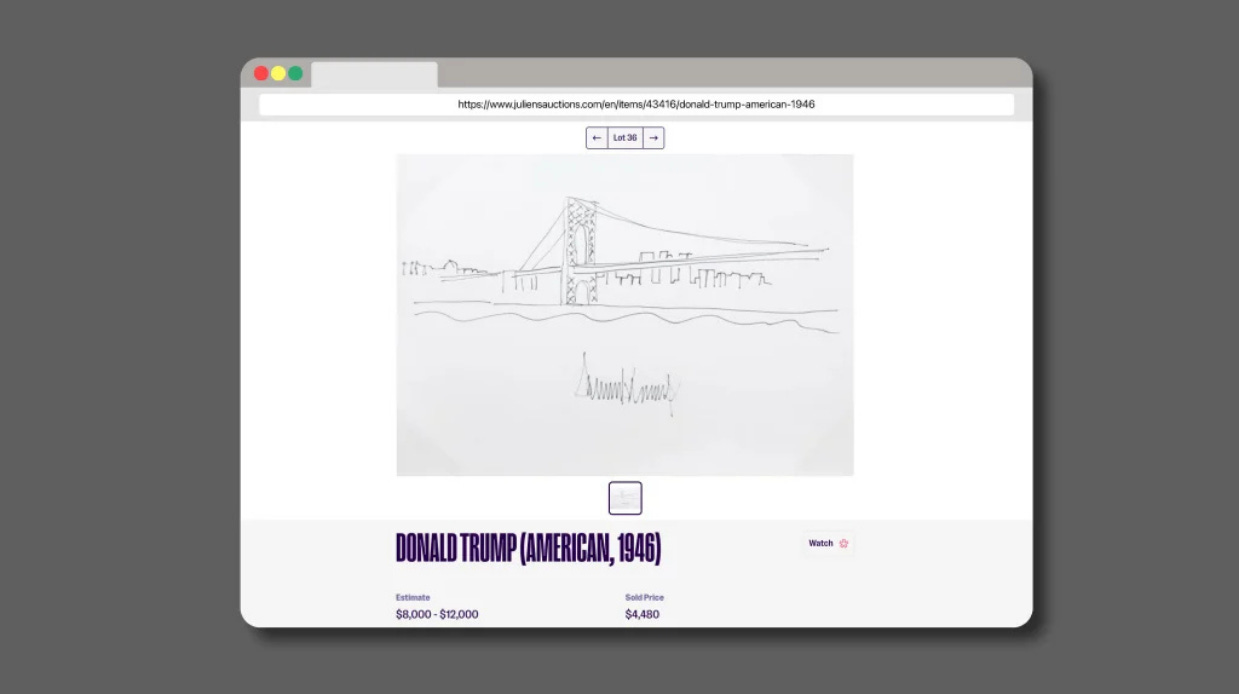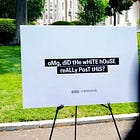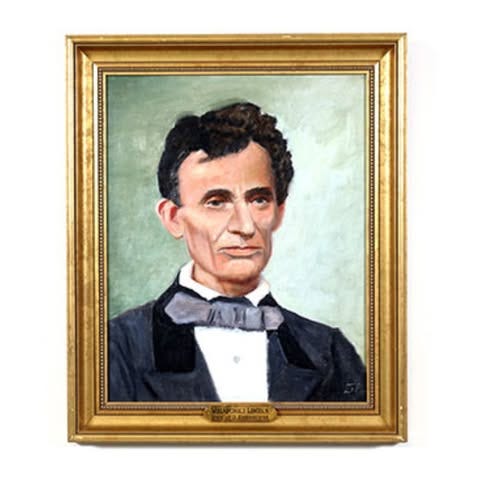Trump’s too modest to admit it, but he’s actually one of our great presidential doodlers
Plus: This artist made a mural that found a new way to tell the story of Jan. 6
Trump’s too modest to admit it, but he’s actually one of our great presidential doodlers
As President Donald Trump considers life after the White House when his term-limited time in office ends in 2029, might he follow the path set by one of his predecessors and make a post-presidency pivot to an art career?
Trump’s artistic skills are in the spotlight after The Wall Street Journal reported that Trump allegedly contributed a lewd drawing and suggestive poem for Jeffrey Epstein’s 50th birthday in 2003. Trump denied having anything to do with the page, but in his denial, he told an undisputable lie: “I never wrote a picture in my life,” he told The Journal.
Trump has, in fact, made many pictures in his life, and the description of the medium used to make the drawing reportedly sent to Epstein—a heavy marker— just so happens to be his medium of choice. Say what you will about the inconsistencies between his words, politics, and actions, but Trump has a consistent, distinctive artistic style.
Trump created marker-made doodles showing recurring motifs of city skylines for charity auctions throughout the 2000s, when he hosted NBC’s The Apprentice and The Celebrity Apprentice. “It takes me a few minutes to draw something. In my case, it’s usually a building or a cityscape of skyscrapers, and then I sign my name. But it raises thousands of dollars to help the hungry in New York through the Capuchin Food Pantries Ministry,” he wrote in his 2008 book, Trump Never Give Up: How I Turned My Biggest Challenges Into Success.
Far from trompe l’oeil (French for “fools the eye”), a style in which objects are depicted with photographically realistic detail, one of Trump’s doodles of the Empire State Building is filled in with sharp black squiggles that resemble his own sharp, jagged signature, while a 2006 sketch of the George Washington Bridge stands apart from the rest and proves Trump has more artistic skill than he might let on. His sketch of the bridge shows a sense of depth and angles.
Viewed as a body of work, most of Trump’s sketches are rudimentary and his skylines blocky and simple (“Art may not be my strong point,” he admitted in Trump Never Give Up), but they share an aesthetic. And judging Trump’s work alongside the art of other presidents—from presidential doodles to former President George W. Bush’s post-presidency oil paintings—it’s clear that his style is singular.
“It’s sort of surprising that Trump’s doodles show a bit of artistic talent,” David Greenberg, a journalism and media studies professor at Rutgers University and author of books including Presidential Doodles, tells me. “I’d put him in maybe the top third of presidents in his doodling. Of course, it’s hard to say. He’s no Herbert Hoover, that’s for sure.” The National Archives called Hoover “among America’s greatest doodling presidents.”
Is there a market for Trump to make a name for himself as an artist out of office? Like with a painting by, say, Khloe Kardashian, Trump’s doodles aren’t valuable for their artistic merit, but for the artist’s famous name. Trump’s Empire State Building drawing sold at auction for $100 in 1995 for a charity; by 2017, when he was president, it resold for $16,000. By this measure, Trump’s potential value as an artist has never been higher. More famous than ever, Trump could do worse than an art career.
Previously in Yello:
This artist made a mural that found a new way to tell the story of Jan. 6
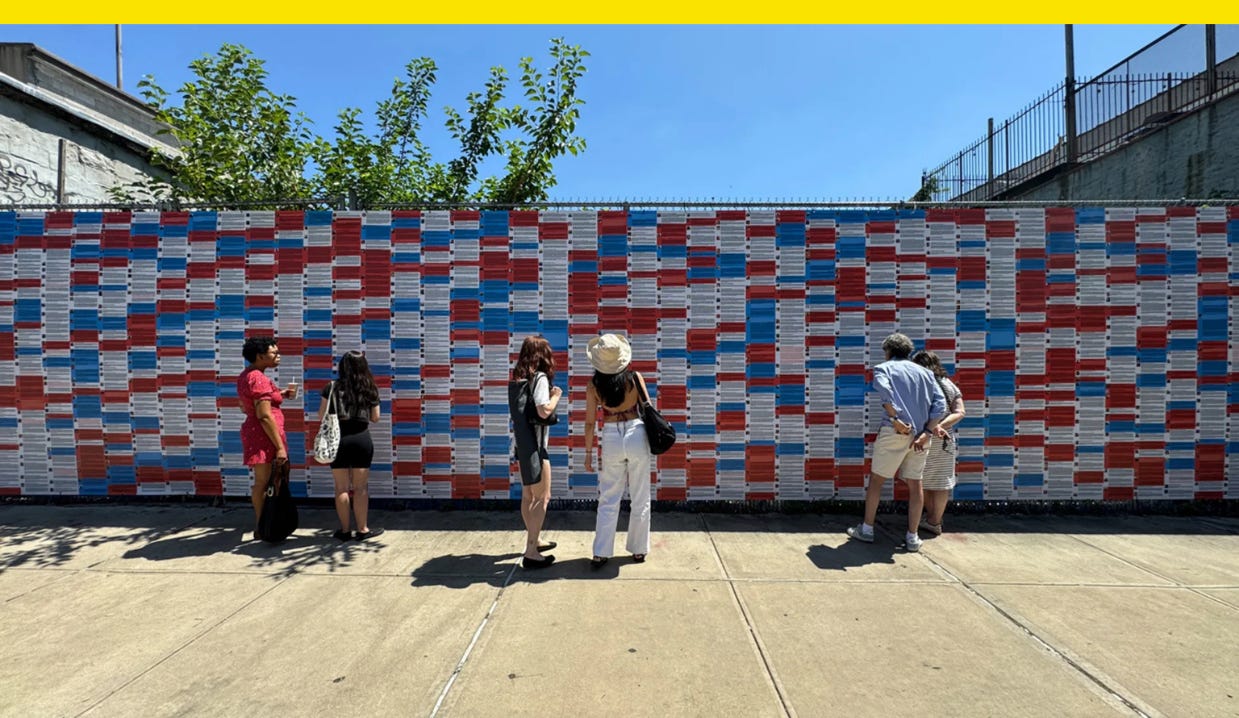
President Donald Trump’s modus operandi is to keep the news cycle moving, fast. For even avid consumers of news, that can make it hard to keep up. But one public art project is doing its best to slow things down by retelling stories in new ways, the latest shining light on the people behind the attack on the U.S. Capitol on Jan. 6, 2021.
Wall of Shame is artist Phil Buehler’s 50-foot-long, 10-foot-tall mural put up in the Bushwick neighborhood of Brooklyn in partnership with Radio Free Brooklyn; it takes a data viz approach to very recent history. Subtitled Visualizing the J6 Insurrection, it’s made up of more than 1,500 color-coded waterproof vinyl panels that display a headshot, name, age, and hometown of rioters who invaded the Capitol on Jan. 6, along with details of their actions on that day, including their charges and sentencing, all information that is publicly available.
The U.S. flag-inspired colors used for the mural are designed to turn right-wing positioning of rioters as patriots on its head. Red panels indicate violent rioters, while blue panels indicate those who damaged property. The rest are white, according to Radio Free Brooklyn, a local New York station. “A red hat, white skin, and blue jeans don’t make you a patriot. But storming the Capitol makes you a traitor,” Buehler told the station.
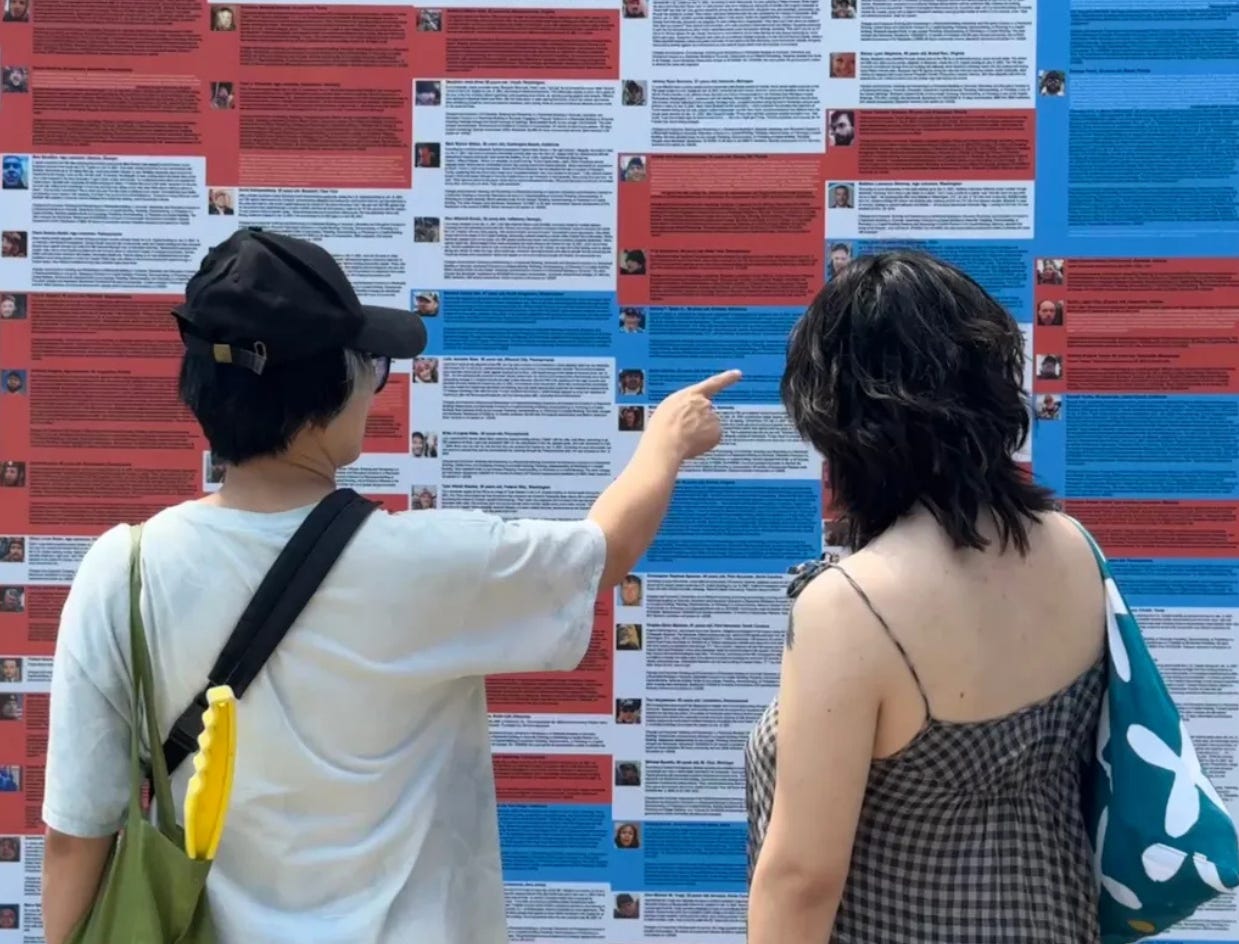
Buehler’s approach makes the attack more personal. This isn’t another photo or footage of the faceless mob of flag-waving rioters storming the Capitol in an attempt to overturn an election; it’s a look at individual people from the crowd. The artist fact-checked everything written on the panels with reporting from NPR.
The artist has made two previous murals with Radio Free Brooklyn. Wall of Lies in 2020 was made up of 20,000 false statements Trump made during his first term as president. Wall of Liars and Deniers in 2022 showed Republican candidates running for office that year who denied the results of the 2020 election. Wall of Shame was unveiled on Independence Day.
A February Washington Post/Ipsos poll found that 83% of Americans opposed Trump offering clemency for violent criminal offenders connected to the attack, and 55% opposed him offering clemency for nonviolent crimes. But in today’s fast-paced political news cycle, January 2021 can feel like ancient history. By turning the backstories of those who attacked the Capitol into public art, Buehler and Radio Free Brooklyn found a new way to visualize the story, and from hundreds of different points of view.
Have you seen this?
What the Department of Homeland Security’s very specific taste in art says about our immigration policy. Between deportation announcements and celebrating ICE raids, the DHS has taken to posting art that depicts the America it wants to see. [Fast Company]
Obama addresses rumors. One of the most famous political figures in America finally put the rumors to rest. No, I’m not talking about that scandal, I’m talking about former First Lady Michelle Obama, who talked about her marriage on her podcast with husband on as guest. Meanwhile, the White House made a rare disclosure about POTUS’s health. [Whig]
History of political design
"Melancholy Lincoln" (ca. 1955). This oil-on-canvas portrait of Abraham Lincoln by Dwight Eisenhower was of several Eisenhower painted of Lincoln while he was president. A total mood.
Portions of this newsletter were first published in Fast Company.
Like what you see? Subscribe for more:


